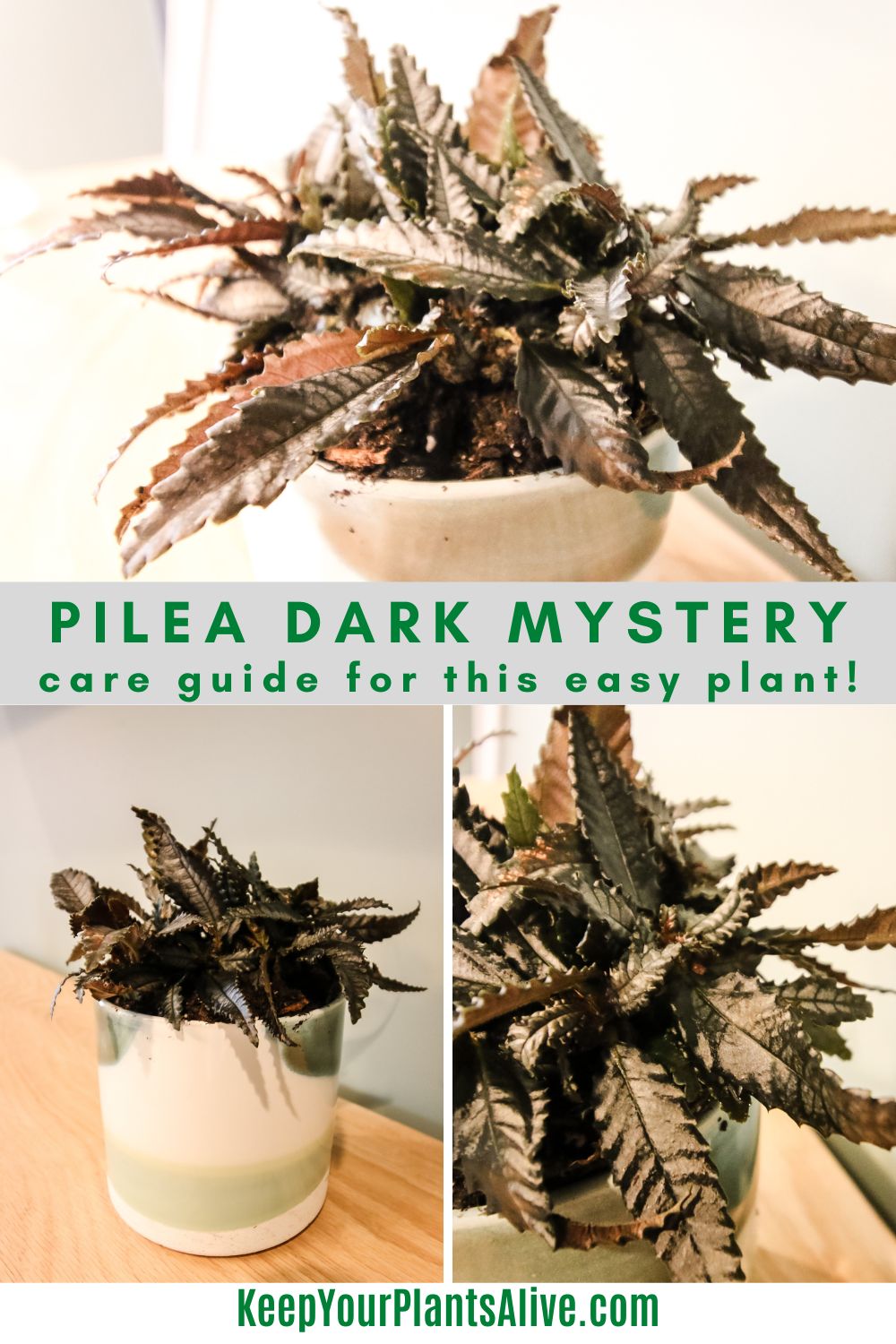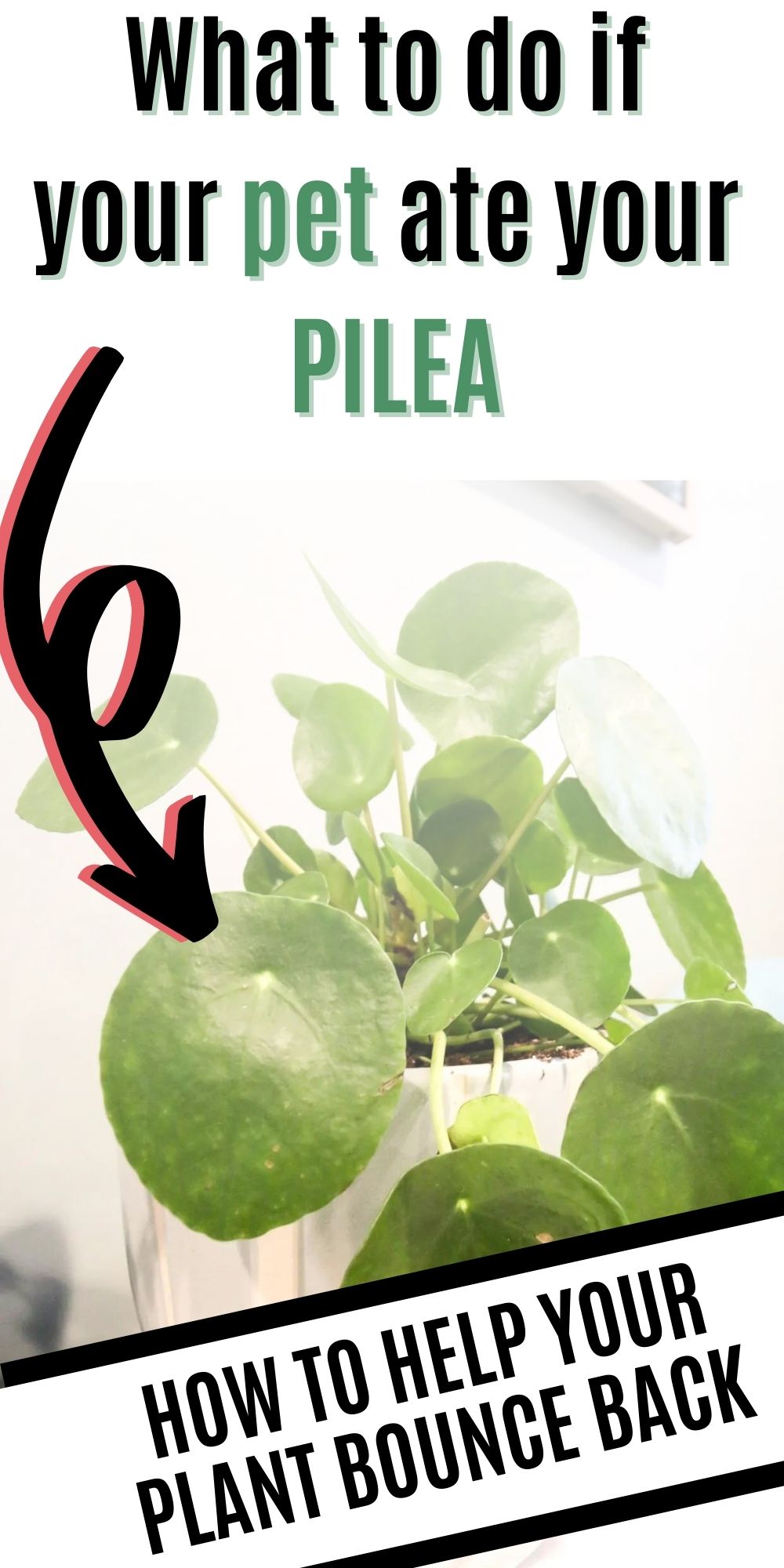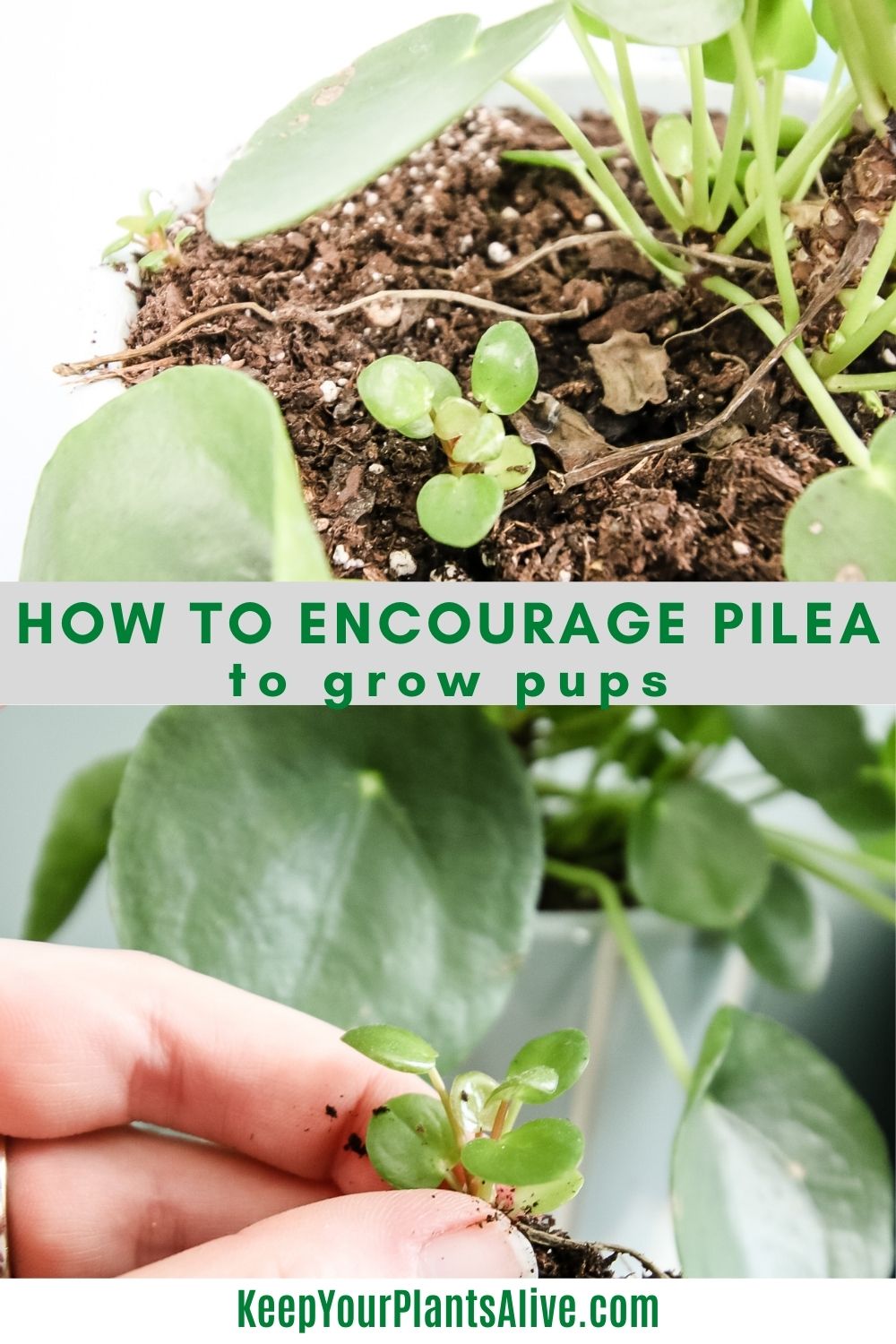Wondering why your pilea leaves are turning yellow? Let's troubleshoot this common problem and get your plant healthy again!
Pilea (AKA chinese money plant) is a super cute, trendy houseplant. They have a unique shape with lilly pad like leaves.
So, if you are starting to have problems with your pilea, it can be a bummer. One of the most common pilea problems is yellowing leaves.
The thing to remember about yellowing leaves is that they are a warning signal that the plant is stressed about something. Address it quickly to avoid a bigger problem - like your whole pilea plant dying!
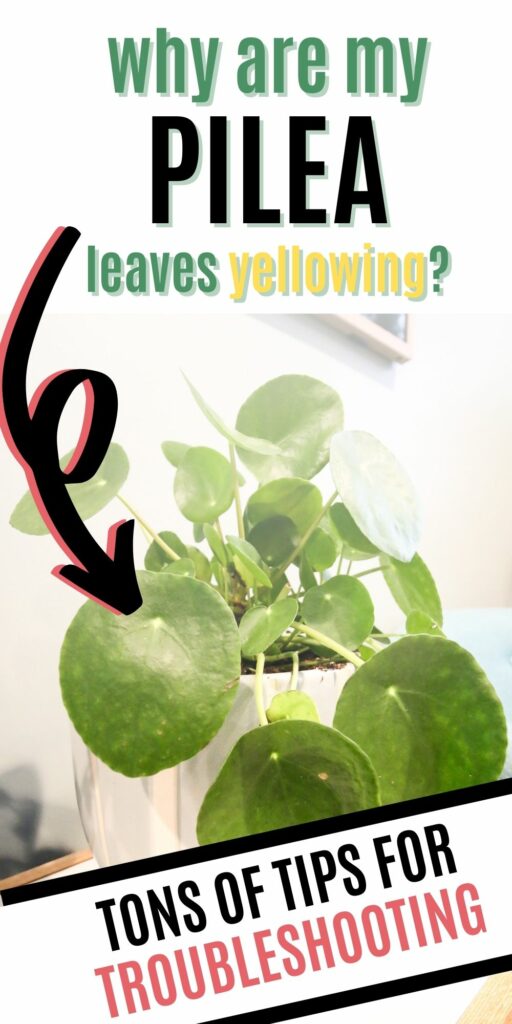
Why are my pilea leaves turning yellow?
Here are a few common reasons that you might get yellowing leaves on your pilea plant.
- Overwatering
- Low humidity
- Inconsistant watering
- Insufficient light
- Root bound plant
- Bacterial Leaf Spot
- Pests
- Old age
Overwatering
Overwatering is the #1 cause of yellowing leaves on most indoor house plants. In general, plants don't like to sit in excess water. Pooling water can lead to root rot which will kill your plant.
If you suspect overwatering, stick your finger about 2 inches into the soil. Does it feel wet? Don't water again until it dries out.
Overwatered pileas tend to get yellow but also get droopy and limp.
If your plant is way over watered, take it out of the pot. Dump out any excess water and wet soil and re-pot with fresh potting mix.
Be sure that your pot has drainage holes to prevent excess water from pooling in the future.
Low humidity
I find this to be MUCH less frequent than over watering, but low humidity can cause leaf drop. Usually the leaves will get brown, crispy spots on them (often on the edges). Then, the leaves might turn yellow.
Under watered plants look sad and wilted, with crispy brown spots. The soil often dries up and shrinks, leaving a gap between the soil and the rim of the pot.
These symptoms indicate that the plant is drying out. If it's being watered well, misting the leaves can help to improve humidity in the air.
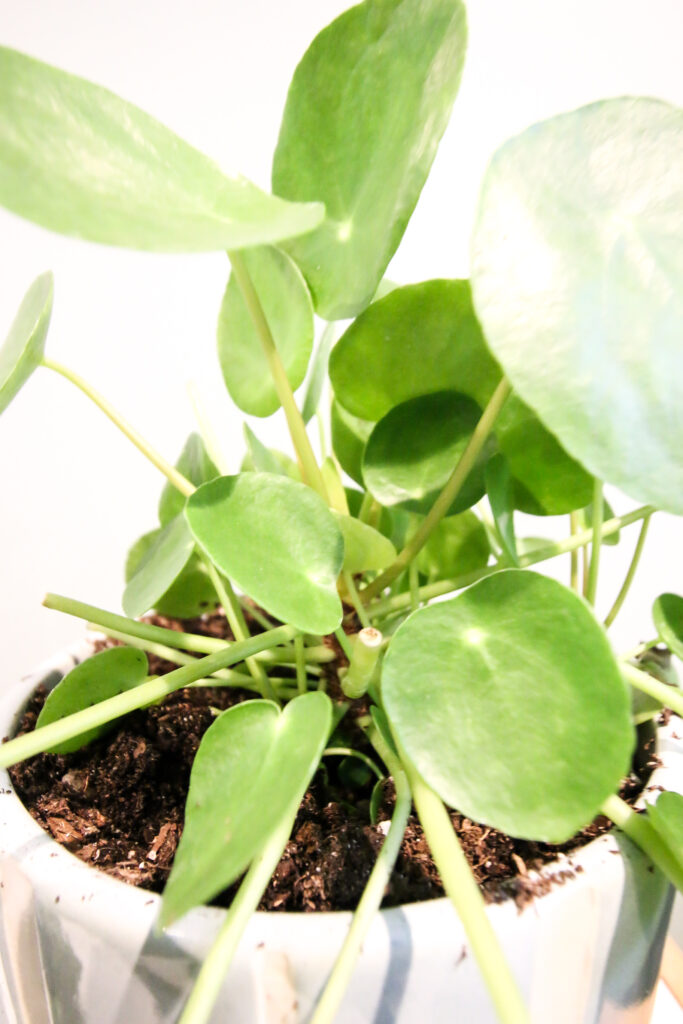
Inconsistant watering
In my experience, pilea plants are NOT very picky about watering. However, some claim that they like to be on a watering schedule.
For example, I water my plants every Sunday. There is a big asterisk there - if the pot still feels damp from last week, I don't water again.
My husband used to keep pothos in his cubicle and he watered them just a teeny splash five days a week.
Both plants were happy. But maybe they were like a toddler, just happy to be on a schedule.
Going from bone dry to soaking wet at random intervals could stress out your plant and lead to yellowing leaves.
If in doubt, establish a regular watering schedule and try to stick to it.
Insufficient light
Pilea likes bright indirect light and will grow towards the closest light source.
However, if your plant isn't getting enough light, the leaves can start to turn yellow and drop. This will especially happen to older leaves towards the base of the plant.
The cure to this is to move your plant into bright, indirect light. It will be much happier.
I also sometimes get yellow leaves on my plants on the side of the pot furthest from the window. It's a great reminder to rotate your plant for balanced growth!
Root Bound Plant
It is possible that your pilea plant has become root bound. Basically, the roots are too big for the pot.
Pull it out of the pot and see! If it's been there a while - this is a real possibility.
If the roots are tightly packed or even poking out the drainage hole - time for a bigger pot. Add fresh potting soil while you are at it for a happier plant!
Bacterial Leaf Spot
Soft,, brown, mushy spots on a leaf are called Bacterial Leaf Spots. This come from water sitting on the leaves and rotting them.
Remove all effected leaves and avoid getting the leaves wet when you water it!

Pests
Pest attacks can happen, though pilea seem to be less prone to pest attacks than some other plants.
Spider mites, scale, and mealy bugs can get on the underside of leaves and suck the nutrients out of your plant.
If you suspect pests, isolate your plant to help prevent it from spreading to other plants.
Old age
As plants get older, it is natural for some of the older leaves to yellow and fall off, making room for new growth. Keeping a leaf green takes energy, and some plants decide to allocate that energy to new plants.
Think of it as the plant needing energy for the new leaves and taking it from old growth. It's lived a good life and time to pass it on to the new generation 🙂
If this is the case, you will have yellowing of older leaves - near the base of the plant - only, and not new growth.
This can also be a sign that you need to fertilize - there isn't enough nutrients to go around as is!
Any more questions about yellowing pilea plants?
Thanks for reading!


Hey there, I'm Morgan, a houseplant enthusiast from sunny Charleston, South Carolina. Growing up surrounded by my mom's lush orchids and African violets, I discovered the magic of bringing nature indoors. Thanks to the pandemic, I delved deeper into houseplants, discovering their power to uplift moods and transform spaces. I'm here to spill all my secrets, helping you pick the perfect houseplant - and make it happy. Let's keep your plants alive, together! 😊

